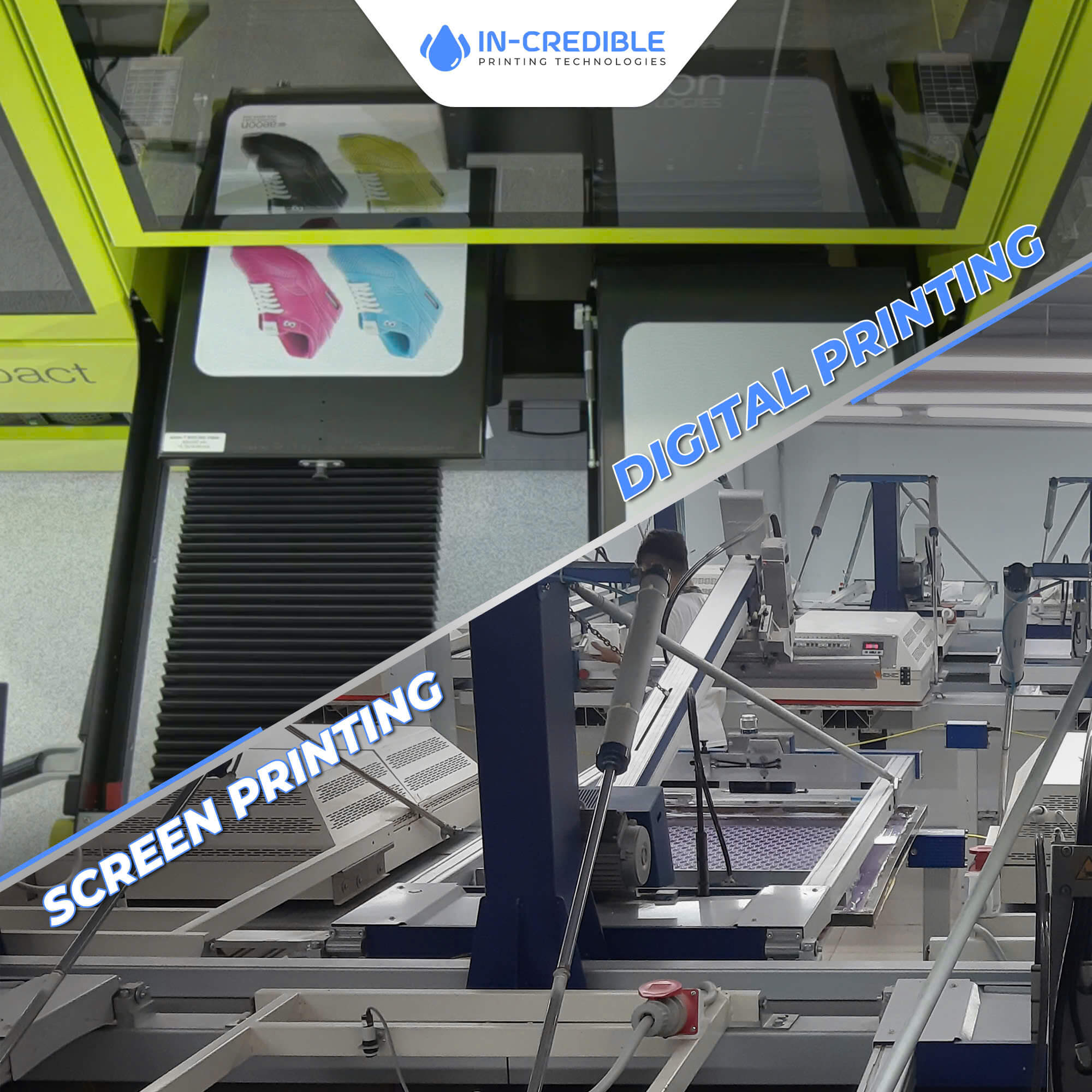When you’re planning custom apparel for an event, uniforms for a team, or merchandise for your brand, choosing the right printing method is more than just a technical decision — it affects cost, turnaround time, durability, and the overall look of your final product.
The two most common options on the market today are screen printing services and digital garment printing. But how do you know which one is right for your needs?
Let’s break down the differences, advantages, and best use cases for both methods — especially when it comes to event shirts, team uniforms, and promotional merchandise.
What Is Screen Printing?
Screen printing is a traditional method that uses stencils (or “screens”) to apply layers of ink onto a garment. Each color in the design requires a separate screen, which means this method is ideal for simple artwork and larger runs.
The process offers rich, opaque colors and excellent durability — making it a go-to for high-volume projects like school uniforms, concert tees, and corporate giveaways.
Pros of Screen Printing
Cons of Screen Printing
- Vibrant colors that pop, even on dark fabrics
- Long-lasting prints that withstand repeated washing
- Cost-effective for bulk orders
- Great for bold logos or vector-based designs
- Not ideal for small orders due to setup costs
- Limited in handling detailed, photo-like artwork
- Each new color adds to the cost and complexity
What Is Digital Garment Printing (DTG)?
Digital Garment Printing, or DTG, is a newer method where ink is sprayed directly onto the fabric using a specialized printer — similar to how an inkjet printer works on paper. It’s perfect for detailed designs, full-color images, or one-off prints.
DTG is often favored by fashion startups, print-on-demand services, and brands that prioritize design freedom and small batch production.
- No setup time — great for short runs or one-offs
- Capable of detailed, high-resolution images
- Full-color printing without limitations
- Softer feel on the fabric, especially on cotton
- Works best on 100% cotton garments
- Slightly lower durability over time compared to screen printing
- Slower for bulk orders due to machine speed
Comparison Table: Screen Printing vs. DTG Printing
Best For
Bulk orders, uniforms, bold logos
Detail Level

When to Choose Screen Printing Services
Screen printing truly excels in scenarios where consistency, durability, and high-volume output are essential. For corporate or promotional events – such as expos, conferences, or team-building activities – screen printing delivers unmatched cost efficiency per unit and rapid production once setup is complete.
It’s also ideal for sports teams and school uniforms, where the prints must withstand heavy wear and frequent washing. When producing branded merchandise in bulk, screen printing helps keep costs low and profit margins high, especially if you’re confident the design will sell. In all of these cases, the vibrant colors and long-lasting quality of screen printing make it a smart, reliable choice.
When to Choose Digital Garment Printing
DTG (Direct-to-Garment) printing is the ideal choice when flexibility, design complexity, or small-order capabilities matter more than the cost savings of bulk production. It’s perfect for event merchandise with unique designs – such as at music festivals or art fairs – where each artist may want their own exclusive merch.
For eCommerce brands, creators, or influencers, DTG supports true print-on-demand, allowing you to fulfill one order at a time without holding inventory. It’s also great for sample runs or prototypes, enabling you to test new designs with high-quality results before committing to mass production. And when it comes to high-resolution artwork – like photos, gradients, or fine lines – DTG captures intricate details far better than traditional screen printing.
Which Method Is More Cost-Effective?
It depends on your order size and design complexity.
- For small quantities (under 500 pieces), digital garment printing is generally more cost-efficient because there’s no setup.
- For large quantities (500+), screen printing becomes more economical per piece after the initial setup cost is covered.
Another way to think about it: DTG is better when you’re experimenting or selling to niche audiences. Screen printing is better when you’ve got a crowd to outfit and a clear, repeatable design.
A Hybrid Approach: Best of Both Worlds?
Some apparel decorators — including us at In-Credible — offer both screen printing and DTG services, and even combine the two methods when it makes sense. For instance, screen printing can be used for the front logo of a shirt in a uniform design, while DTG printing is added on the back for personalized names or custom graphics.
This hybrid strategy provides the best of both worlds: cost efficiency for standardized elements and creative flexibility for personalization. It’s an ideal solution for modern merchandise collections, event apparel, or uniform programs that offer optional customization.
Final Thoughts: What’s Right for Your Project?
Choosing between screen printing and digital garment printing isn’t about which method is “better.” It’s about what works best for your timeline, budget, fabric type, and design goals.
If you’re unsure which direction to take, our team at In-Credible is here to help. With deep experience serving both international brands and local startups, we can guide you through the pros and cons of each method, show samples, and help you optimize your project — whether it’s 1,000 shirts or 10,000.